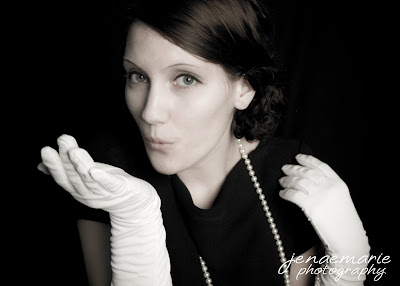Monday, August 6, 2012
Tom and Ally Nelson Wedding
Monday, February 20, 2012
Tuesday, April 19, 2011
"Exposed"
“Along with our parents, the mass media raised us, socialized us, entertained us, comforted us, deceived us, disciplined us, told us what we could do and told us what we couldn’t do. And they played a key role in turning each of us into not one woman but many women-a pastiche of all the good women and bad women that came to us through the printing presses, projectors, and airwaves of America. This has been one of the mass media’s most important legacies for female consciousness: the erosion of anything resembling a unified self.” - Susan J. Douglas
Here I present a single portrait from each decade since the turn of the 20th century, as this marks the time period when the magazine industry first began distributing images that (literally) reshaped American society. In this work I focus especially on American women.
I use the medium of photography because, first, it acts as a media guide portraying women throughout the 20th century as I analyze the concept of the ideal woman and, second, it helps expose the false reality of the ideal that many choose to believe in. My photographs examine the construction of feminine identity.
First, the reason these portraits depict women of high fashion in each decade is to portray the gradual immersion of the American ideal woman into who she has become today. Our society uses portraits like these to construct an (unreachable) ideal of beauty, a telltale sign that our society, then, must also tend to feel that the average woman is not as glamorous as they should be. How a woman is portrayed in a high fashion portrait establishes the ideal toward which women of that decade are to achieve. It ignores who she actually is or was. However, the fact that the portrait is merely a representation of the ideal woman demonstrates that such a woman does not actually exist. Instead, the camera and the photographer are together creating a false reality. These glamor shots demonstrate that we Americans are overly-consumed to what the media says we are supposed to be. It prevents us from concentrating on who we actually are as individuals. Therefore, this segment of our reality is based on false idealism formed by mainstream commercialism, which is focused on the "ideal woman," an image which no woman can naturally achieve.
Second, I chose to use photographs because photos portray and present and historical realities. With this said, however, how much can we rely on the camera to portray reality? I propose this question because I believe that one must be cautioned when looking at a photograph, keeping in mind that it depicts only a representation of an object and should not be solely relied on to determine how something actually is, or if it truly exists. I claim this because I believe photographs can lie as this series makes that clear.
Many rely on photography to portray reality because photography overtook painting’s documentary role. Photographer Jeff Wall says that the instantaneous and mechanical nature of photography makes us think one can naturally know or believe that what is being depicted in a photograph is real (i.e. not thought up in an artist’s imagination). However, because of darkroom manipulation in the 19th and 20th centuries, and especially now through the use of software such as Photoshop, photography can no longer be trusted to truthfully represent the real at all times. This is especially true, I believe, because photographers are often not merely trying to reproduce reality, but to visually improve it, as well. Also, as Susan Sontag suggests, a snap shot depicting a person might make them look “better” or “worse,” depending on how photogenic society considers him or her to be. A person may sometimes disapprove of or disagree with a photographical representation of them, yet he or she has obviously not changed in reality. Rather, the camera has falsely depicted its subject matter, therefore illustrating a major reason that photography cannot be fully trusted as a true interpretation of what is real.

Thursday, February 17, 2011
"Photo Realism" | 1930's | Part 1

Tuesday, November 9, 2010
Melinda Hegeman
Wednesday, October 20, 2010
"Greetings From Sioux Falls" Art Show
“The physical world is the same as it was back then; we are the ones who change. However, we are still connected to those who came before us because common elements, such as nature and human emotion, will never leave.” - Martin Venezky
As a lover of nostalgic art, I knew I wanted to do something that would put these words by Venezky into visual means. Greetings From Sioux Falls, South Dakota is an expansion and final piece of my reflective studies in photography focusing on the reflection of time and memories. Working with the old photos of Sioux Falls not only allowed me to learn about the city, but also to reflect on my time spent there. After revisiting and photographing the sites where the original photos were taken, I manipulated and fused together the two photographs resulting in one composition. Though in these compositions the landscapes around the structure and the structure itself might have minor alterations, the history still remains resulting in a reflective experience of what was and what is for myself, and the viewer.




































































